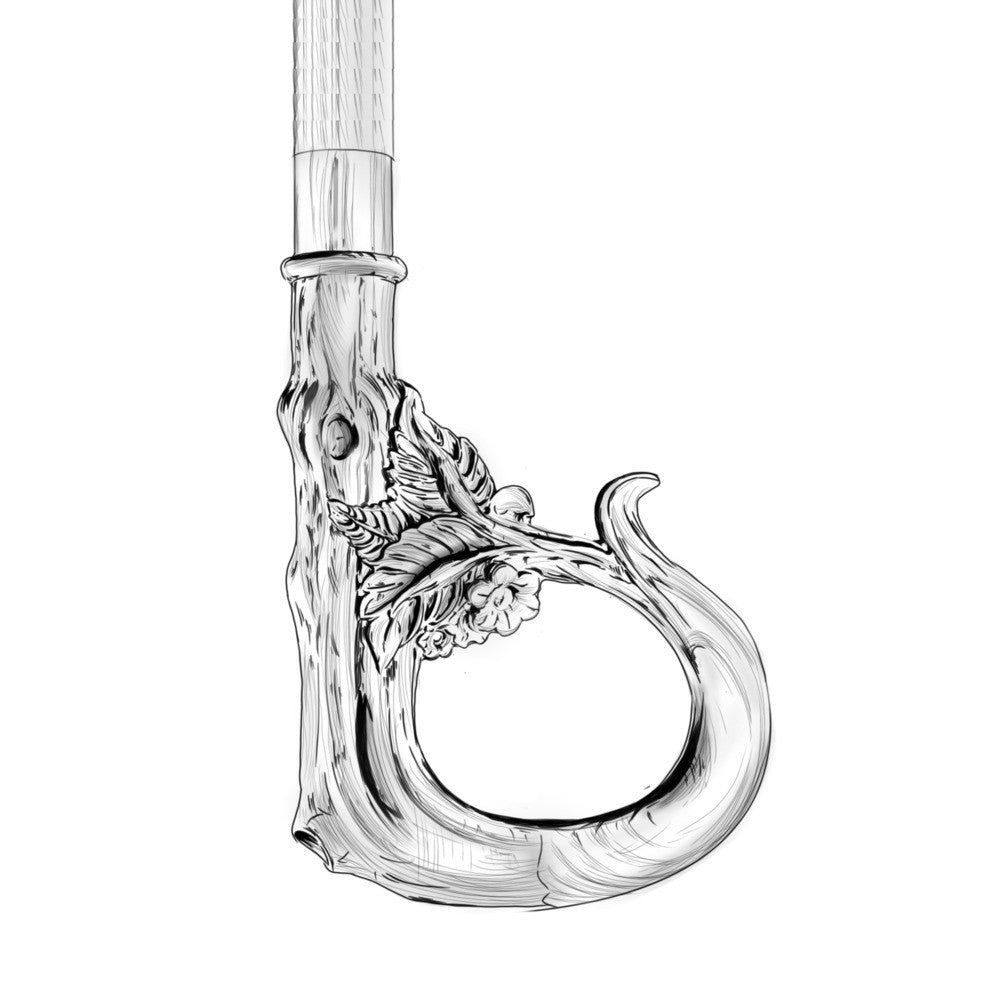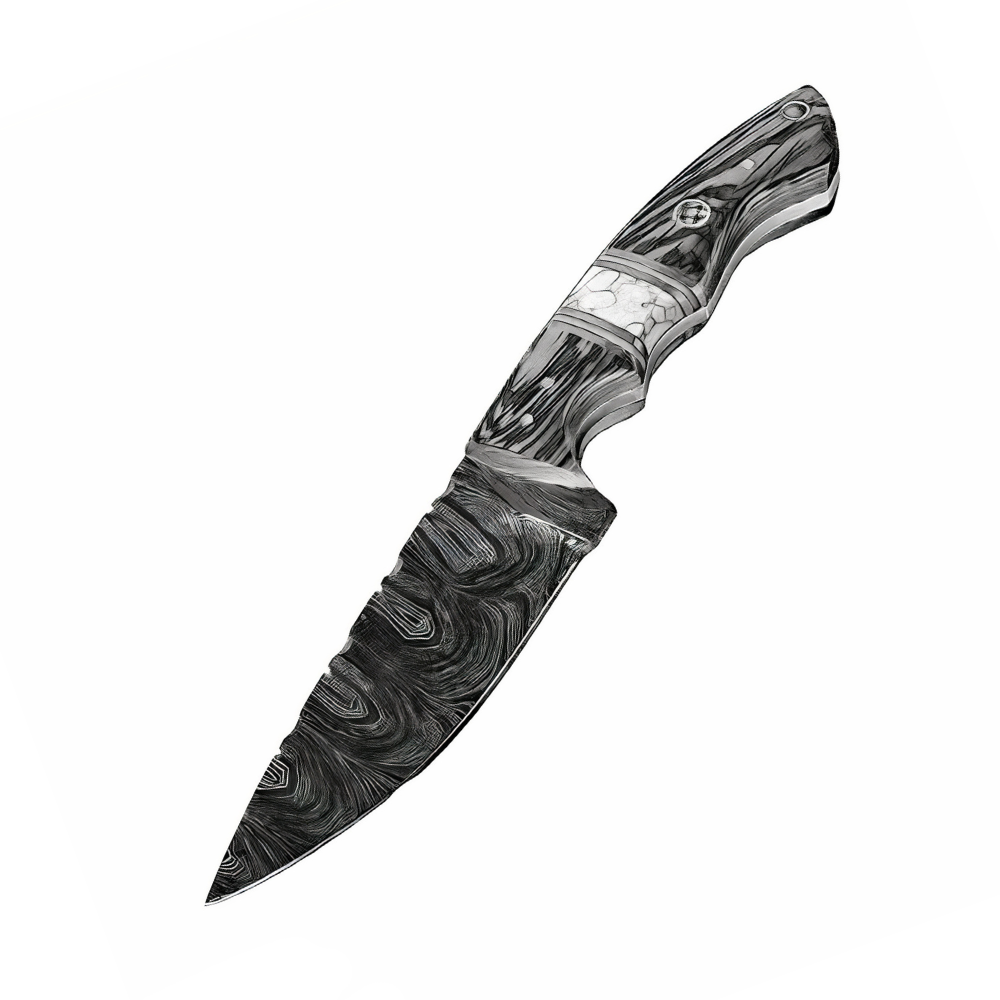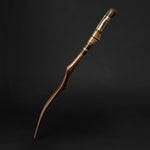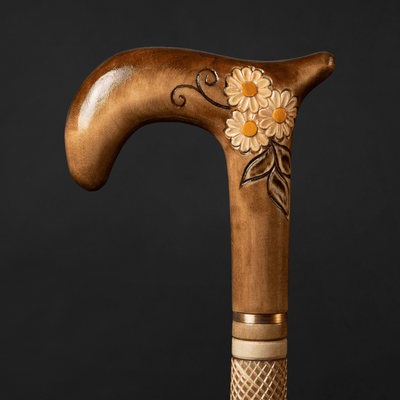You have no items in your shopping cart.
Recent Posts
-
The Art of Christmas Design: Walking Canes That Celebrate the Season in Style
-
How an Ergonomic Walking Cane Handle Prevents Hand and Wrist Strain?
-
How to Walk With a Cane Correctly to Avoid Back or Shoulder Strain?
-
5 Common Mistakes People Make When Buying a Walking Cane (and How to Avoid Them)
-
How to Choose a Walking Cane That Reflects Your Personality (Not Just Your Needs)?
-
Walking Canes That Match Formalwear for Weddings and Events
MOST POPULAR NOW
03
May
Are you planning to embark on a winter hiking adventure? Or do you want to prepare for a stroll in the snow-covered countryside? Either way, a reliable walking stick is an essential accessory to ensure your safety and comfort. In this comprehensive guide, we will help you choose the best walking stick for your needs, taking into account factors such as material, length, grip, and accessories.
The best walking sticks for cold weather and winter hiking
Understanding the benefits of walking sticks in cold weather
When it comes to winter hiking, the weather can be harsh and unpredictable. That is why it is essential to be well-prepared for your adventure, and having a walking stick can be a game-changer. In this article, we will explore the reasons why using walking sticks during winter hiking is so important.
-
Why use walking sticks in winter hiking?
Walking sticks, also known as trekking poles, are not just for mountaineers or seasoned hikers. They can be used by anyone who wants to add an extra layer of safety and support while hiking. During winter hiking, walking sticks can provide the following benefits:
1.1 Improved balance: Walking on snowy and icy trails can be slippery and dangerous. A walking stick provides extra points of contact with the ground, improving balance and reducing the risk of slipping and falling.
1.2 Stability on steep terrain: Hiking on steep terrain can be challenging, especially when there is snow and ice. Walking sticks can provide stability and support, making it easier to navigate steep slopes.
1.3 Relief for sore knees: Hiking can be tough on the knees, especially during winter when the ground is harder. Walking sticks can help to reduce the impact on your knees by distributing the weight more evenly.

-
The advantages of using walking sticks for balance and support
Walking sticks can be used in a variety of ways to provide support and balance during winter hiking. Here are some advantages of using walking sticks:
2.1. Increased stability: Walking sticks can provide a stable base, especially when crossing streams or hiking on uneven terrain. They can also be used to test the stability of the ground before taking a step.
2.2. Improved posture: Hiking with a walking stick can help to improve posture, reducing the risk of back and neck pain. It can also help to keep your chest open, allowing for deeper breaths and better oxygenation.
2.3. Better endurance: Using walking sticks can help to distribute the weight of your pack more evenly, reducing the strain on your legs and improving your overall endurance.
-
The health benefits of walking with sticks in the cold weather
Using walking sticks during winter hiking has many health benefits. Here are some of the ways walking sticks can help you stay healthy during your winter adventures:
3.1. Cardiovascular health: Walking is an excellent form of cardiovascular exercise. Using walking sticks can increase the intensity of your workout and provide a full-body workout.
3.2. Improved joint health: Walking with a walking stick can help to reduce the impact on your joints, especially your knees and hips. This can help to prevent or alleviate joint pain.
3.3. Reduced risk of injury: Walking sticks can help to reduce the risk of injury by providing support and balance. They can also be used to break a fall, reducing the risk of serious injury.
Choosing the right material for your walking stick
When it comes to choosing the right material for your walking stick, there are several options to consider. Each material has its own unique benefits and drawbacks, and it's essential to choose the material that best suits your needs. In this article, we'll explore some of the most common materials for walking sticks and their characteristics.
-
Wood: traditional and sturdy
Wood is the most traditional material used for walking sticks. It is a classic choice for those who appreciate a more rustic look and feel. Wood is also known for its strength and durability, making it an excellent choice for those who need a sturdy walking stick.
One of the benefits of wood is that it can be customized to fit your specific needs. For example, you can choose a thicker or thinner stick, depending on your grip strength. Additionally, wood can be carved or sanded to create a unique design or pattern.
However, wood can be heavy, which may not be ideal for those who are looking for a lightweight walking stick. It can also be prone to cracking or splitting over time, especially if it's not properly cared for.
-
Aluminum: lightweight and versatile
Aluminum is a popular material for walking sticks due to its lightweight and versatile nature. It's an excellent choice for those who are looking for a walking stick that is easy to carry and use on long hikes.
One of the benefits of aluminum is that it's corrosion-resistant, which makes it ideal for use in wet or damp conditions. Additionally, aluminum can be easily adjusted to fit your height or grip preference, making it a versatile choice for a wide range of hikers.
However, aluminum may not be as sturdy as other materials and may not provide as much support as a wooden or carbon fiber walking stick. It can also be prone to bending or denting if it's subjected to too much pressure.
-
Carbon fiber: high-performance and durable
Carbon fiber is a high-performance material that is used in a variety of applications, including walking sticks. It's known for its strength and durability, making it an excellent choice for those who need a walking stick that can withstand rugged terrain.
One of the benefits of carbon fiber is that it's lightweight, making it easy to carry on long hikes. It's also highly resistant to impact, making it ideal for use in rocky or rough terrain. Additionally, carbon fiber can be easily adjusted to fit your height or grip preference.
However, carbon fiber can be expensive compared to other materials. It can also be brittle, which means it may not be the best choice for those who need a walking stick for heavy use.
-
Other materials to consider: fiberglass, bamboo, and titanium
There are several other materials to consider when choosing a walking stick, including fiberglass, bamboo, and titanium. Fiberglass is a lightweight and durable material that is resistant to impact and wear. Bamboo is a renewable and eco-friendly material that is also lightweight and durable. Titanium is a strong and lightweight material that is highly resistant to corrosion and wear.
When choosing a walking stick material, it's essential to consider your specific needs and preferences. Each material has its own unique benefits and drawbacks, and the right material for you will depend on your hiking style, preferences, and budget.
In conclusion, choosing the right material for your walking stick is an important decision that can impact your hiking experience. By considering the characteristics of each material, you can make an informed decision that best suits your needs and preferences.
Finding the perfect length for your walking stick
When it comes to walking sticks, finding the perfect length is crucial for comfort and effectiveness. Whether you're planning a winter hike or simply looking for some support during a chilly walk, your walking stick's length can significantly impact your experience. In this article, we'll discuss how to measure the ideal length of your walking stick, the differences between adjustable and fixed-length walking sticks, and the factors to consider when choosing the length of your walking stick.
1. How to measure the ideal length of your walking stick?
To find the ideal length for your walking stick, you should stand upright with your arms at your sides. Bend your elbow at a 90-degree angle and measure the distance from the floor to your elbow. This measurement will give you a good estimate of the ideal length of your walking stick.
It's important to note that this measurement is just a starting point, and you may need to adjust your walking stick's length based on your personal preferences and the terrain you'll be walking on. If you plan on using your walking stick primarily on flat terrain, you may prefer a shorter length, while a longer stick may be more suitable for uneven ground.
2. Adjustable vs. Fixed-length walking sticks: Which one is right for you?
Walking sticks come in two main types: adjustable and fixed-length. Adjustable walking sticks can be extended or shortened to fit your height and the terrain you're walking on. Fixed-length walking sticks, on the other hand, are set at a specific length and cannot be adjusted.
Adjustable walking sticks offer more versatility, as you can adjust the length based on your needs. They're also easier to pack and transport, as they can be collapsed to a smaller size. However, they may not be as sturdy as fixed-length walking sticks and can rattle or slip if not properly secured.
Fixed-length walking sticks are generally sturdier and more reliable than adjustable walking sticks. They also offer a more consistent level of support, as the length is always the same. However, they can be more difficult to transport, as they cannot be collapsed to a smaller size.
3. Factors to consider when choosing the length of your walking stick
When choosing the length of your walking stick, there are several factors to consider:
-
Your height: The ideal length of your walking stick will depend on your height. Taller individuals may prefer a longer stick, while shorter individuals may prefer a shorter stick.
-
The terrain: If you plan on walking on uneven ground, a longer walking stick may be more suitable. If you'll be walking on flat terrain, a shorter stick may be more comfortable.
-
Personal preferences: Ultimately, the length of your walking stick should be based on your personal preferences. Some individuals may prefer a longer stick for added support, while others may find a shorter stick more comfortable.
In conclusion, finding the perfect length for your walking stick is essential for comfort and effectiveness. By measuring the ideal length, considering the differences between adjustable and fixed-length walking sticks, and taking into account personal preferences and terrain, you can choose the right length for your needs.
Selecting the best grip for your walking stick
Walking sticks are a great accessory for hikers, especially during cold weather. Not only do they provide balance and support, but they can also offer several health benefits. However, to get the most out of your walking stick, it is essential to choose the right one for your needs. In this article, we will discuss the various aspects of selecting the perfect walking stick to enhance your hiking experience in cold weather.
Choosing the right material for your walking stick
When it comes to selecting the right walking stick material, there are several options to choose from. Here are some of the most popular materials and their advantages:
1. Wood: traditional and sturdy
Wooden walking sticks are the most traditional type of walking stick and can be aesthetically pleasing. They are strong and durable, making them perfect for hikers who prefer a sturdy walking stick. However, wooden walking sticks are usually heavy and can be difficult to carry around.
2. Aluminum: lightweight and versatile
Aluminum walking sticks are lightweight and versatile, making them an excellent choice for hikers who prefer a lightweight walking stick. They are also corrosion-resistant, making them suitable for use in any weather condition. However, they may not be as durable as wooden walking sticks and may not provide as much support.
3. Carbon fiber: high-performance and durable
Carbon fiber walking sticks are the most high-performance walking sticks available. They are strong, durable, and lightweight, making them perfect for hikers who want a high-quality walking stick. Carbon fiber walking sticks are also corrosion-resistant and can be used in any weather condition. However, they can be expensive compared to other materials.
4. Other materials to consider: fiberglass, bamboo, and titanium
Other materials that you may consider for your walking stick include fiberglass, bamboo, and titanium. Fiberglass is a lightweight and durable material, while bamboo is aesthetically pleasing and eco-friendly. Titanium is a strong and lightweight material that is perfect for hikers who want a high-performance walking stick.
Finding the perfect length for your walking stick
The length of your walking stick is critical to ensure maximum comfort and support. Here are some essential factors to consider when selecting the ideal length of your walking stick:
1. How to measure the ideal length of your walking stick?
To measure the ideal length of your walking stick, stand upright with your arms at your sides. Bend your elbow at a 90-degree angle, then measure the distance from the ground to the top of your fist. This measurement will give you an estimate of the ideal length of your walking stick.
2. Adjustable vs. fxed-length walking sticks: which one Is right for you?
Adjustable walking sticks are perfect for hikers who prefer flexibility and versatility. They can be adjusted to the ideal length, depending on the terrain or the user's preference. On the other hand, fixed-length walking sticks are perfect for hikers who want a walking stick that is specific to their height and preference.
3. Factors to consider when choosing the length of your walking stick
When choosing the length of your walking stick, several factors should be considered, including the type of terrain you will be hiking on and the user's height. For example, if you plan to hike on flat terrain, a shorter walking stick may be suitable. However, if you plan to hike on steep and uneven terrain, a longer walking stick may be more appropriate.
Exploring the different accessories for your walking stick
Walking sticks, also known as trekking poles or hiking sticks, have become increasingly popular among outdoor enthusiasts in recent years. They are essential equipment for hiking, walking, and trekking, especially during cold weather conditions. A walking stick can provide you with the necessary balance, support, and stability to help you navigate slippery and uneven terrain safely. In this article, we will explore the benefits of using a walking stick in cold weather and how to choose the best one for your needs.
1. Why use walking sticks in winter hiking?
Walking sticks provide hikers with an additional point of contact with the ground, which helps improve balance and reduce the risk of falls. During winter hiking, trails can become slippery and icy, making it challenging to maintain balance. A walking stick can provide hikers with additional support and stability, especially when navigating steep or uneven terrain. They also help reduce the impact on your knees and lower body, making it easier to hike for longer periods.
2. The advantages of using walking sticks for balance and support
Walking sticks can provide additional balance and support, which can be beneficial for hikers with knee, ankle, or hip problems. The additional support can help reduce the impact on your joints, making it easier to hike for longer periods without discomfort. Additionally, walking sticks can help improve your posture and provide you with the necessary stability to carry a backpack or other equipment.
3. The health benefits of walking with sticks in the cold weather
Walking with sticks can provide you with a full-body workout, which can help improve your cardiovascular health, muscle strength, and endurance. Using walking sticks can also help burn more calories and reduce the risk of developing conditions such as obesity, diabetes, and heart disease. Furthermore, hiking with walking sticks can also provide you with a mental health boost, helping reduce stress and anxiety and improving overall well-being.

Choosing the right material for your walking stick
When choosing a walking stick, it's important to consider the material used to make it. Different materials offer various benefits and drawbacks, depending on your needs and preferences. Here are some of the most common materials used to make walking sticks:
1. Wood: Traditional and sturdy
Wooden walking sticks are a popular choice for their traditional look and sturdiness. They are typically made from hardwoods such as ash, hickory, or oak, and can provide you with excellent support and stability. However, wooden walking sticks can be heavier than other materials, which may not be ideal for longer hikes.
2. Aluminum: Lightweight and versatile
Aluminum walking sticks are lightweight and durable, making them a popular choice for hikers who need a lightweight option. They are adjustable, which means you can customize the height to fit your needs. Additionally, aluminum walking sticks can collapse down to a smaller size, making them easier to store and transport.
3. Carbon Fiber: High-performance and durable
Carbon fiber walking sticks are high-performance and durable, making them an excellent choice for hikers who need a sturdy and reliable walking stick. They are lightweight and can provide excellent shock absorption, making them ideal for hiking on rugged terrain. However, carbon fiber walking sticks can be more expensive than other materials.
4. Other materials to consider: fiberglass, bamboo, and titanium
Fiberglass walking sticks are lightweight and affordable, making them a popular choice for hikers who need a budget-friendly option. Bamboo walking sticks are eco-friendly and lightweight, making them an excellent choice for hikers who want to reduce their environmental impact. Finally, titanium walking sticks are lightweight and durable, making them an excellent choice for hikers who need a sturdy and reliable walking stick.
Repairing and replacing parts: tips and tricks
Over time, the various parts of your walking stick may wear out or become damaged. Here are some tips on how to repair and replace parts on your walking stick:
- If the tip of your walking stick becomes worn down, you can replace it with a new rubber tip or snow basket. These parts are typically available at outdoor gear stores or online.
- If the grip of your walking stick becomes loose or damaged, you can try using a grip tape to secure it in place. Alternatively, you may need to replace the entire grip with a new one.
- If the shaft of your walking stick becomes bent or warped, it may need to be replaced entirely. This is more common with wood walking sticks than with those made from aluminum or carbon fiber.
- For collapsible walking sticks, make sure to inspect the locking mechanisms regularly to ensure that they are secure and functioning properly.
If you are unsure about how to repair or replace parts on your walking stick, it may be best to take it to a professional outdoor gear shop or contact the manufacturer for guidance.
Long-term maintenance: ensuring the longevity of your walking stick
To ensure that your walking stick lasts for many years of cold weather hiking, it's important to take good care of it and perform regular maintenance. Here are some tips on how to ensure the longevity of your walking stick:
- Avoid exposing your walking stick to extreme temperatures, such as leaving it in a hot car or exposing it to freezing temperatures for long periods of time.
- Avoid getting your walking stick wet, if possible. Moisture can cause damage to certain materials, such as wood or bamboo.
- When not in use, store your walking stick in a dry, cool place where it won't be exposed to moisture or extreme temperatures.
- Perform regular maintenance, such as cleaning and inspecting your walking stick after each use, and repairing or replacing parts as needed.
- Finally, be sure to choose a walking stick that is made from high-quality materials and designed for cold weather hiking. Investing in a durable, well-made walking stick can save you time and money in the long run.
By following these tips for long-term maintenance, you can enjoy your walking stick for many years to come and stay safe and stable during cold weather hikes.
Conclusion
In conclusion, a reliable walking stick is an indispensable tool for any cold weather adventurer or winter hiker. By choosing the right material, length, grip, and accessories, you can ensure your safety, comfort, and enjoyment of the great outdoors. We hope that this guide has been helpful in your search for the best walking stick for your needs.
Also Purchased
-
Beige Walking Cane for Ladies Chamomile Flower, Wooden Walking Stick
Introducing our beautiful Beige Walking Cane for Ladies with Chamomile Flower, a Wooden Walking Stick that is hand carved and handmade, making it both pretty and unique. This walking cane...$79.50 -
Exotic Burl Wood Walking Cane – Fashionable Artisan Stick
A sculptural statement in deep, oceanic blue — this walking cane is more than a support accessory, it's wearable art. Meticulously hand-shaped from stabilized burl wood, the handle evokes the...$425.00 -
ArtWalkingSticks™ MAGIC Walking Cane, Handmade - Make to Order
This piece of art is created for those who value details. We make one of a kind, handcrafted wood and resin canes. Our Wooden Canes are completely unmatched in creativity....$430.00 -
Umbrella with Eagle Handle, Fashion Umbrella For Men
Make a bold and fashionable statement with our Umbrella with Eagle Handle - a unique and functional accessory designed for men. The striking eagle handle is the highlight of this...$325.00 -
Fashionable Lion Shoehorn Long Handle, Pearly Brown Shaft, Handmade
Introducing our Fashionable Lion Shoehorn, a handcrafted, long-handled shoe horn with a pearly brown shaft that's both stylish and practical. The intricate Lion design adds a touch of elegance to...$240.00 -
ArtWalkingSticks™ MAGIC Red Walking Cane - Unisex, Handmade
This piece of art is created for those who value details. We make one of a kind, handcrafted wood and resin canes. Our Wooden Canes are completely unmatched in creativity....$425.00
































